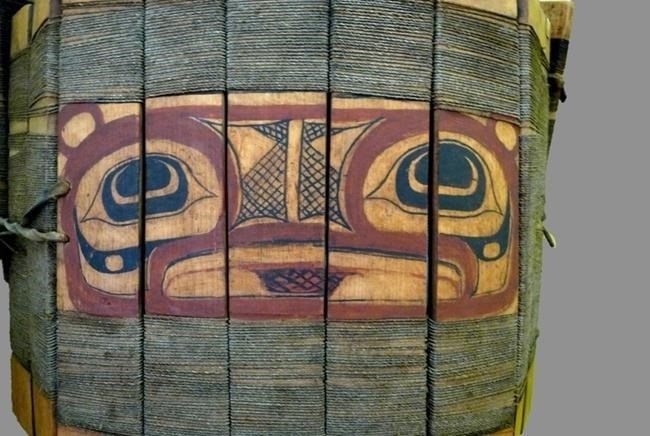
Centuries-old artifacts from the Pacific northwest coast, including a more than 300-year-old piece of Tlingit armour from Alaska shown in a handout photo, are among items lost in the recent fire that destroyed the National Museum of Brazil, but a museum curator in Vancouver says the North American works will live on through digitization.
Image Credit: THE CANADIAN PRESS/HO-Museum of Anthropology, University of British Columbia
September 07, 2018 - 7:00 AM
VANCOUVER - Centuries-old artifacts from the Pacific northwest coast are among items lost in the recent fire that destroyed the National Museum of Brazil, but a museum curator in Vancouver says the North American works will live on through digitization.
Karen Duffek, a curator with the Museum of Anthropology at the University of British Columbia, says about 40 northwest coast items, including a more than 300-year-old piece of Tlingit armour from Alaska, burned in Sunday's blaze.
"The set of armour, which is made out of wooden slats and a kind of twine or cordage, and painted, probably dates to the late 1700s," she said in a telephone interview.
Research had not likely been done to determine the lineage of the warrior who once owned the armour, said Duffek, calling the artifact "quite a rare thing."
A Russian consul sent the armour to the Portuguese royal family as a gift in the early 1800s, she said, and from there it found its way to the museum in Rio de Janeiro.
Destruction of the piece is a "huge loss," she added.
Another curator at the university, working with the Brazil museum, had managed to digitize 42 pieces before the fire, posting pictures and exact details about the armour, several artifacts from the Aleutian Islands, some Haida bowls and a box. Duffek described the result as a digital portal. That portal to the Reciprocal Research Network links to 30 museums around the world and Duffek said it is designed so that Indigenous artists and community researchers can digitally access their heritage, no matter where it is located.
She said there are pockets of northwest coast Indigenous material and culture around the world, and while some collections in Europe are famous, others are almost unknown but often contain important pieces.
"Once in a while you hear of these smaller collections that many of us who are interested in researching these things have never heard about and I think for many people, this Brazilian one is one of them," she said.
"So at least it is good that there are some images that survived because I don't think, from what I have heard, that most of the museum's collection was digitized."
She called the fire "shocking," adding it may motivate museums to step up the expensive and time-consuming process of digitization, something the Museum of Anthropology has been working on since about 2007.
The National Museum of Brazil is still tallying its losses but estimates some of the 20 million artifacts that are likely destroyed include rare Andean mummies, relics from ancient Egypt and unique dinosaur fossils.
News from © The Canadian Press, 2018